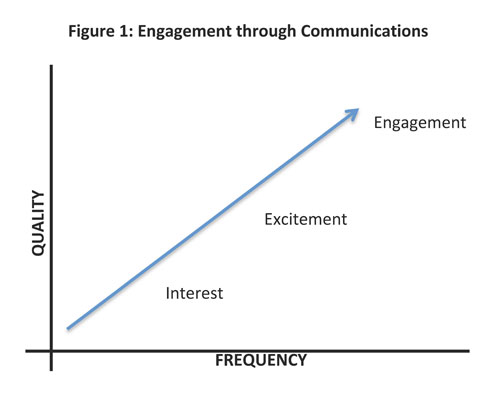
There are plenty of theories about why lean has remained so prominent. What I find most interesting is, the attributes that make it so successful in one organization are the same attributes that lead to its ultimate demise in another. What's the most common contributor to this trend of success or failure in lean?
Culture.
Culture can kill a lean initiative quicker than any other single factor. Culture is also the most significant reason lean has not become widely adopted. Some cultures seem just too hard to crack, just ask one of the big three automotive companies (or at least, those who used to be the big three). Relatively speaking, consider the last organization you were involved with that tried to change its culture. Not too many are successful, and for those that are, the journey is long and difficult.
Sure, there are other factors that have affected the widespread adoption of lean. But culture is something we have struggled with in the past, and continue to struggle with today. The question is, how can we quickly and effectively shift the mindset of those who do not believe in the benefits of lean? More importantly, how can we re-engage those who have been part of a failed lean adoption?
There are several parallels that can be drawn between restructuring organizational culture and transitioning culture to adopt lean. Based on our experience, here are the three most effective ways to prime your culture to embrace and adopt lean.
Do you hear the train a-comin'?
Trying to introduce any initiative without first spending significant time obtaining feedback from those who will be affected is like yelling at another driver with your window rolled up. It's just not effective because they simply can't hear you. Despite your best efforts, your words and their meanings will fall on deaf ears. In essence, the other driver will continue to do whatever it was that he was doing when you first started yelling (Disclaimer: I am not promoting or condoning aggressive driving here). In preparing to adopt and integrate lean, the predominance of time should be invested in conversing with the culture. Figure 1 demonstrates the increased engagement that is achieved as both quality and frequency of communications are increased.

Why? Why us, why now, why me?
If you have introduced lean across the organization, then you are most certainly going to encounter objections, disputes and impediments. Listen closely to most negative feedback, and if you read between the lines, what you will hear are concerns related to personal gratification and benefit. You need to be prepared to explain to everyone involved why lean is the right move, why now is the right time and why they must be involved. This is not the time to pepper a single stale message across the organization that has the emotional sentiment of a political campaign speech. Prepare a customized response for the feedback you receive from each and every work group. Your words must have meaning to those they are intended for.
Am I going to lose my job?
“Not likely?" That is the answer that is often projected, albeit somewhat timidly from the top levels of management. The reality is, there are organizations out there that look to lean as a way to be more efficient, and ultimately to sustain if not reduce headcount. Regardless of whether this is the case for your organization or not, now is the time to be forthright about your intent of introducing lean and your desired outcomes. On the surface, it is difficult for anyone to understand how additional productivity will not result in job losses, but this is typically because they have not been educated on how the improvements in profitability will facilitate future investment, capacity and capability upgrades, and new business opportunities. We need to pull back the curtain and educate employees on the methods behind the madness. They can take it, and they deserve to know.
It isn't that difficult to make improvements to efficiency. Heck, no one ever said that lean was rocket science; in fact , it's just the opposite. It can be a significant challenge to engage the workforce, however by applying the three steps above you will progress your lean initiative much further than with methodology or tools alone.
© Shawn Casemore 2013. All rights reserved.


